Companies that adopt a product led growth strategy are more than twice as likely to grow quickly than those that use traditional sales-led growth.
Unsurprisingly, there’s been a push as of late among many businesses to implement product-led growth.
But is that the right move for your company?
To find out, let’s compare product-led growth vs sales led growth side by side.
What is Product Led Growth?
This approach focuses on using the product itself to fuel growth rather than your sales and marketing team.
Often it involves a free SaaS product version where leads can use the product directly to explore its interface and features to fully understand its value.
With product led growth, leads experience a product firsthand, and there’s little to no involvement from sales and marketing.
It’s essentially a self-service model where leads test out a product independently, with the goal of motivating them to seek full value by purchasing a paid version.
Or as Lean Discovery Groups puts it, “the product is the experience.”
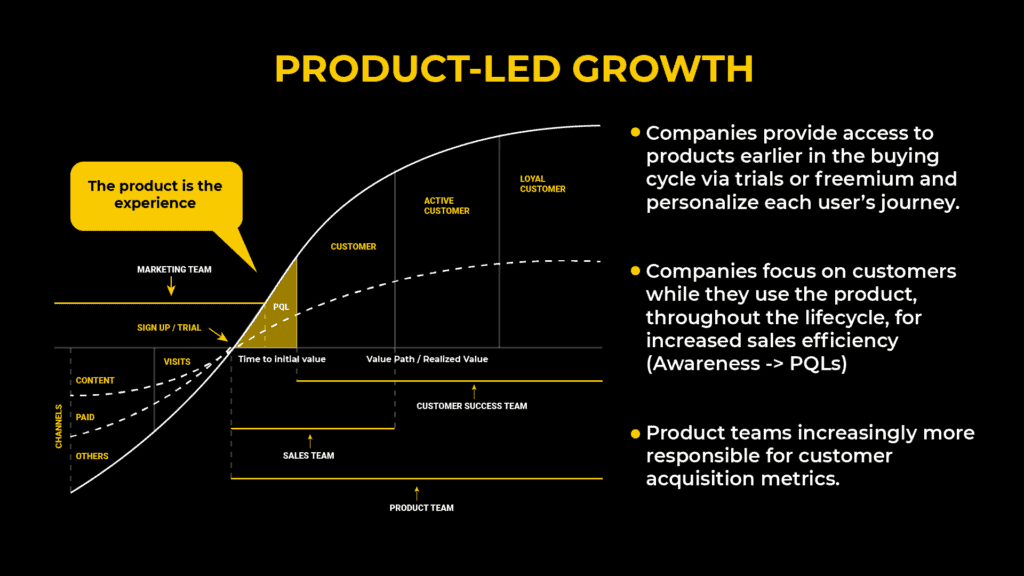 Source: Lean Discovery Group
Source: Lean Discovery Group
What is Sales Led Growth?
Sales led growth is a more traditional approach where a SaaS company actively relies on a sales team to acquire customers.
Just like a marketing team takes the central role in building a company with marketing led growth, a sales team is at the forefront of sales led growth.
Up until recently, when product led sales has really caught on, this is the growth strategy that most companies have historically used.
With it, a sales rep communicates with leads, formally outlining product features and benefits and often providing a product demo.
Unlike a PLG strategy that’s largely self-service, sales led growth is more consultative in nature and focuses on lead nurturing and customer relationship building.
Product Led Growth vs Sales Led Growth: How Are They Different?
The core difference between the two is where they place their focus to drive customer acquisition and retention.
Again, a product first company focuses on the product, while sales led growth relies on the sales (and sometimes the marketing) team.
With a product led revenue growth model, there’s a user-centric approach where a brand typically seeks to get a free product version in the hands of users so they can experiment with it and get a feel for the product independently.
Here, users engage very little or not at all with a sales rep and use the product hands-on. Assuming the product offers genuine value and users are impressed, many will upgrade to a paid version, resulting in a sale.
Slack, for example, offers a Free product usage option that users can start out with.
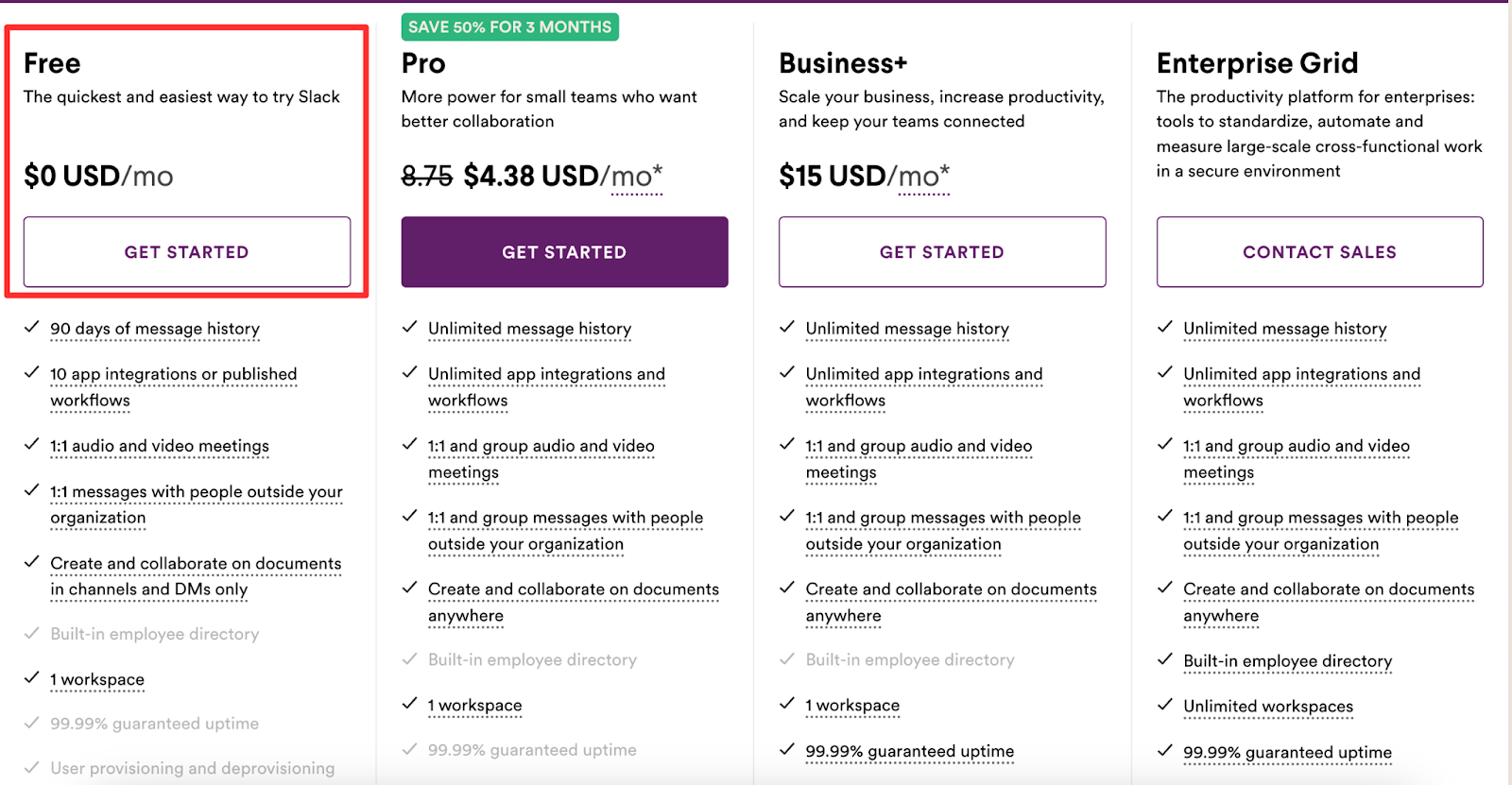 Source: Slack
Source: Slack
Then, as they get acclimated to Slack and want to unlock more features, they can upgrade to Pro, Business+, or even Enterprise Grid.
 Source: Slack
Source: Slack
With a sales led approach, the marketing and sales team play an integral role in prospecting, selling, and converting leads to acquire customers.
This usually involves plenty of personalized interactions where a sales rep:
- Communicates with a lead directly
- Explains a product’s UVP
- Answers questions and objections
- Provides demos
- Offers customized solutions based on customer needs
To further clarify, here’s a nice overview of the differences between a product led company and a sales led company.
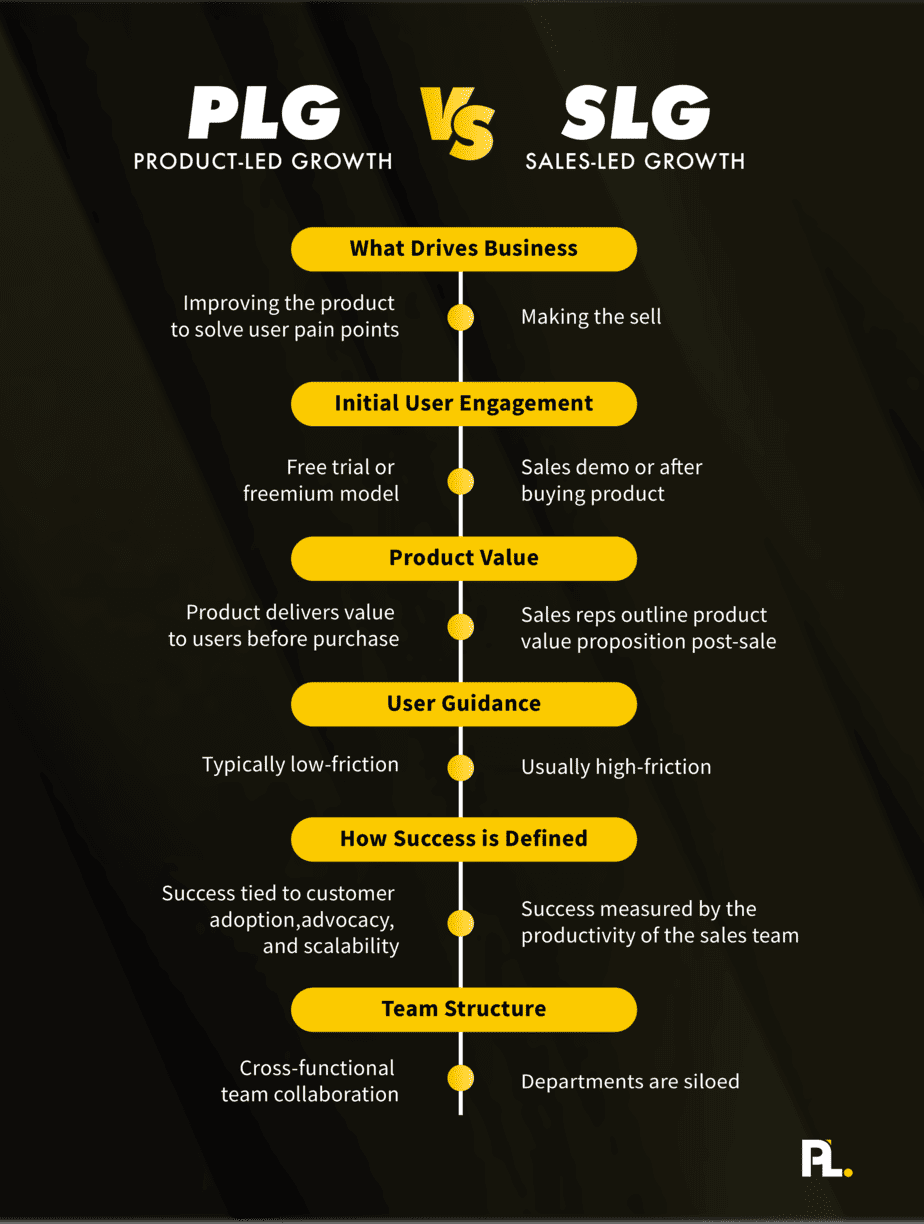 Source: ProductLed
Source: ProductLed
Determining which approach is best largely depends upon your company size, the complexity of your product, and how much guidance is needed from your sales team to win customers over.
Britt Fracolli of ProductLed summarizes the differences perfectly with this quote.
“Sales led models are generally more efficient for businesses offering complex or high-touch solutions, especially in industries where customer education and personalized guidance are crucial. Product led growth, on the other hand, typically works better for products with intuitive interfaces that customers can adopt and explore independently.”
Examples of Product Led Companies
1. Canva
When it comes to product led growth examples where users can explore a product independently, Canva is one of the best in the business.
This company does two things to pull leads in.
One, they give potential customers 30 days to try their most loved features.
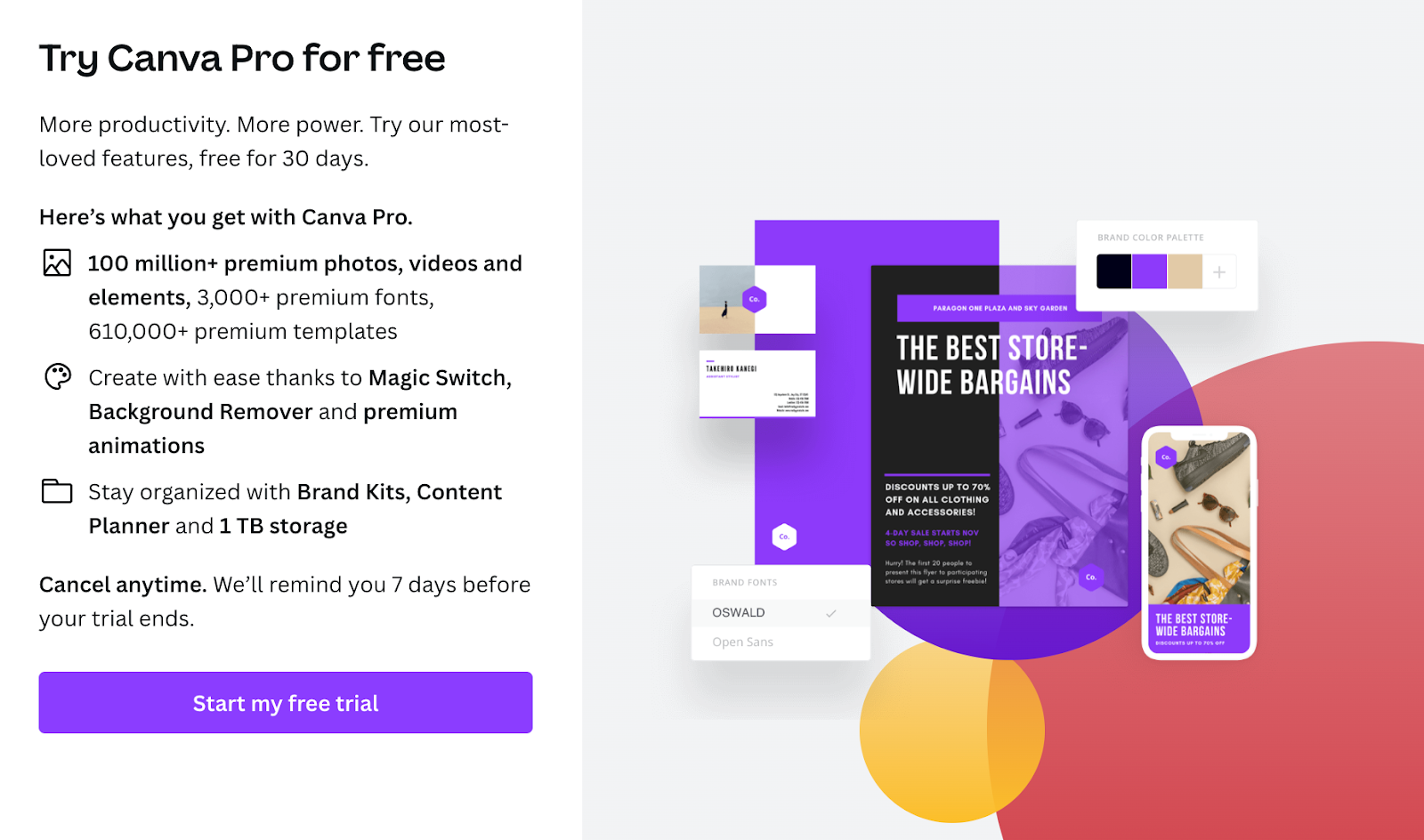 Source: Canva
Source: Canva
Two, they allow users to continue to use basic Canva features indefinitely, which is still quite impressive even without all the bells and whistles.
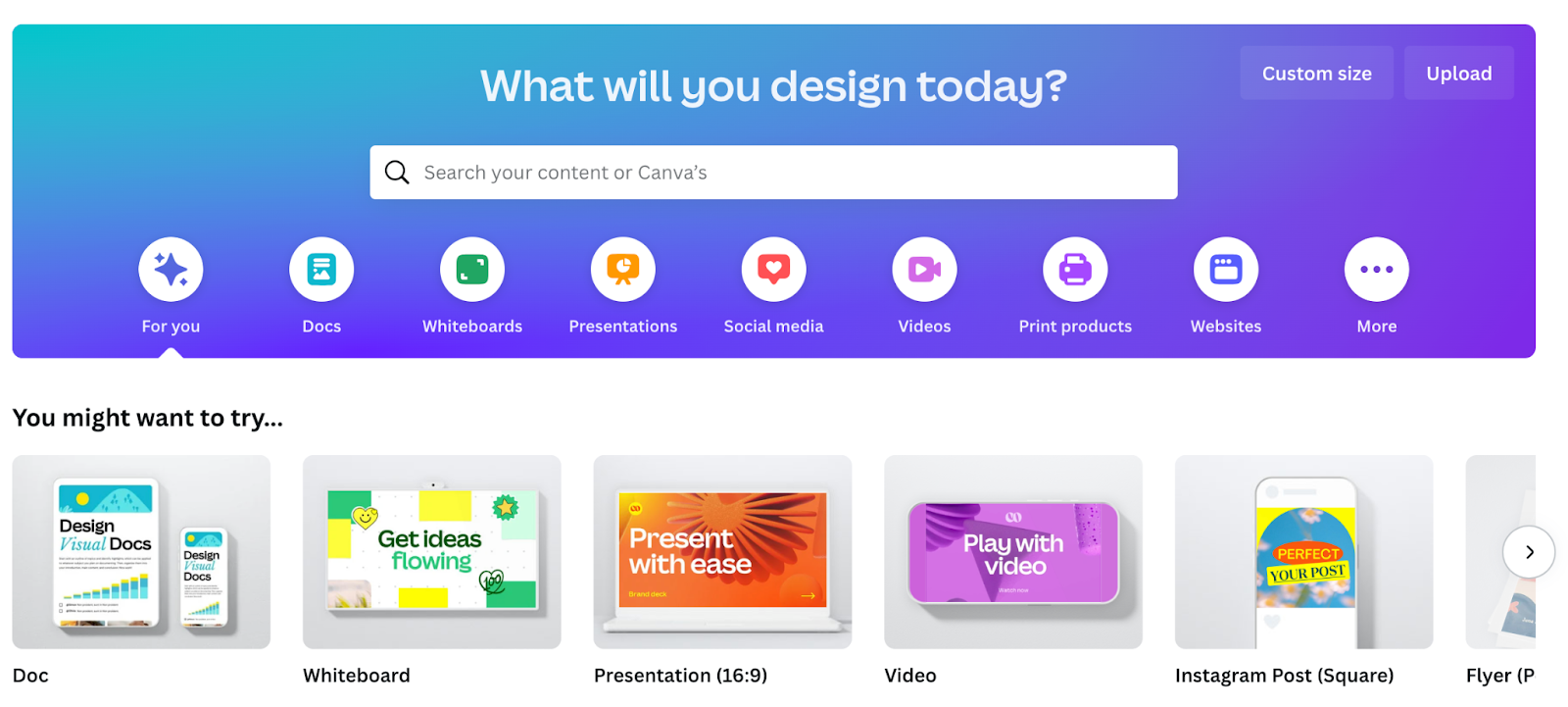 Source: Canva
Source: Canva
Because this platform is so user-friendly and intuitive, Canva can turn users loose and let them explore the full range of features without the need for assistance from sales reps.
But if questions arise, users can turn to Canva’s AI-powered assistant, which can answer questions, offer advice, and gather customer feedback.
 Source: Canva
Source: Canva
When someone concludes that they enjoy Canva and want access to the full range of features, they can easily upgrade to the appropriate paid version here.
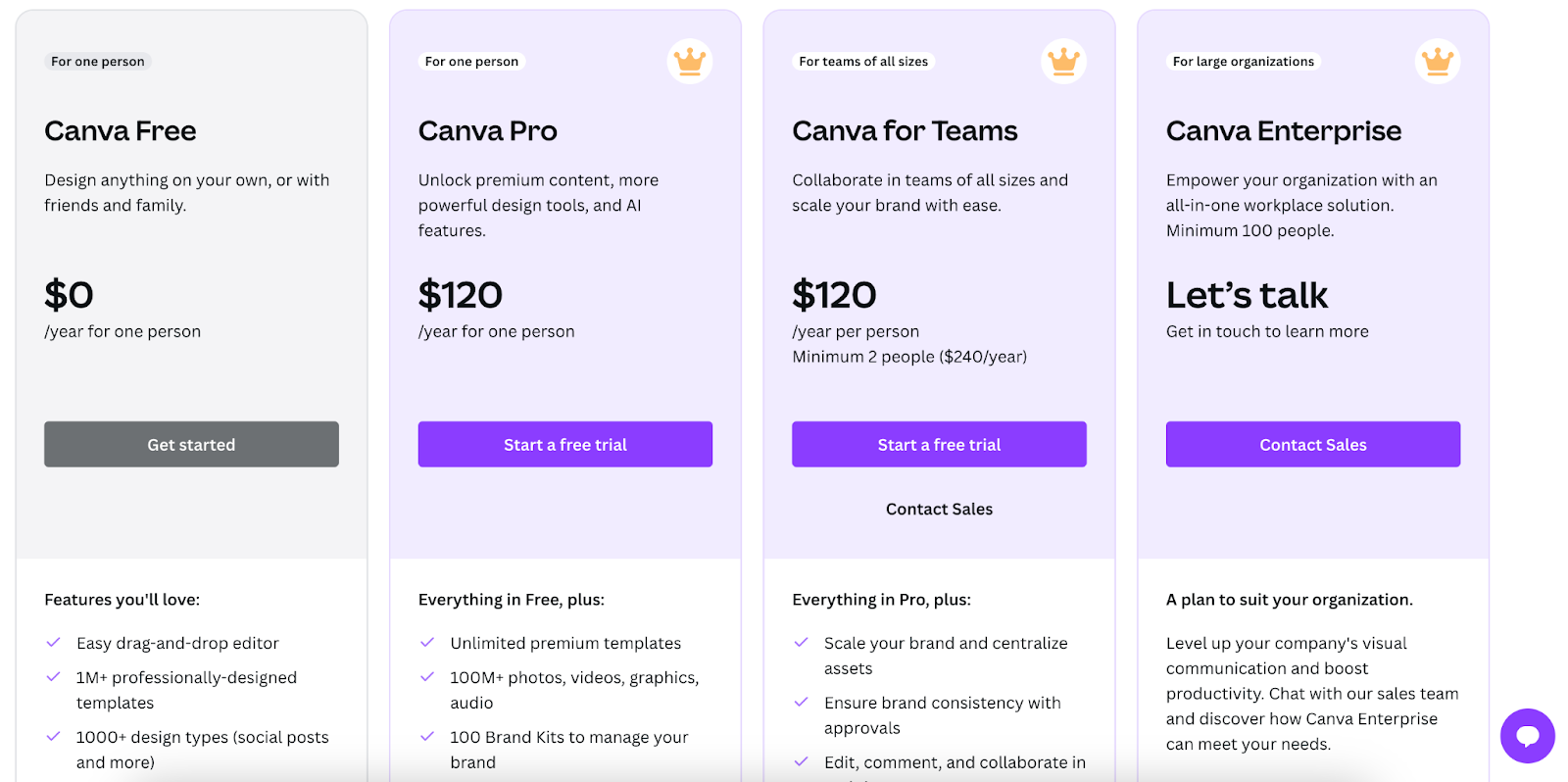 Source: Canva
Source: Canva
Besides that, Canva also offers plenty of “Pro” elements when users are creating designs that can only be unlocked by having a Pro Account, giving this brand another efficient way to monetize without requiring their marketing or sales team to intervene.
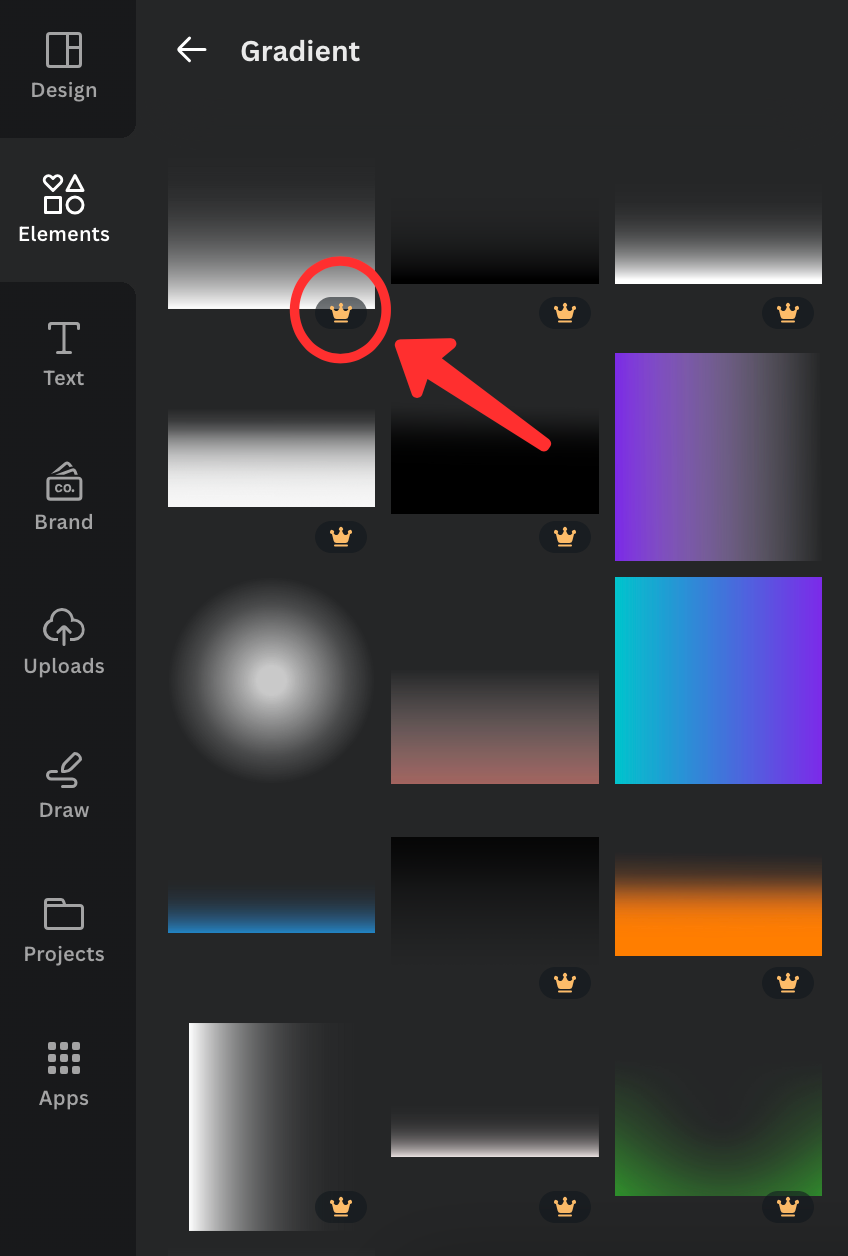 Source: Canva
Source: Canva
The bottom line is that Canva takes an extremely “hands-off approach” with its product led growth strategy and lets the product sell itself to customers.
If you’re seriously considering adopting a PLG strategy, we highly recommend browsing through Canva because there’s a lot you can learn from them.
2. Trello
Project management tool, Trello, is another product led company that uses a free version to get their foot in the door with users and wow them, ultimately persuading many to upgrade to a paid version for full-on product adoption.
Right off the bat, Trello lets users know they offer a free version with this CTA.
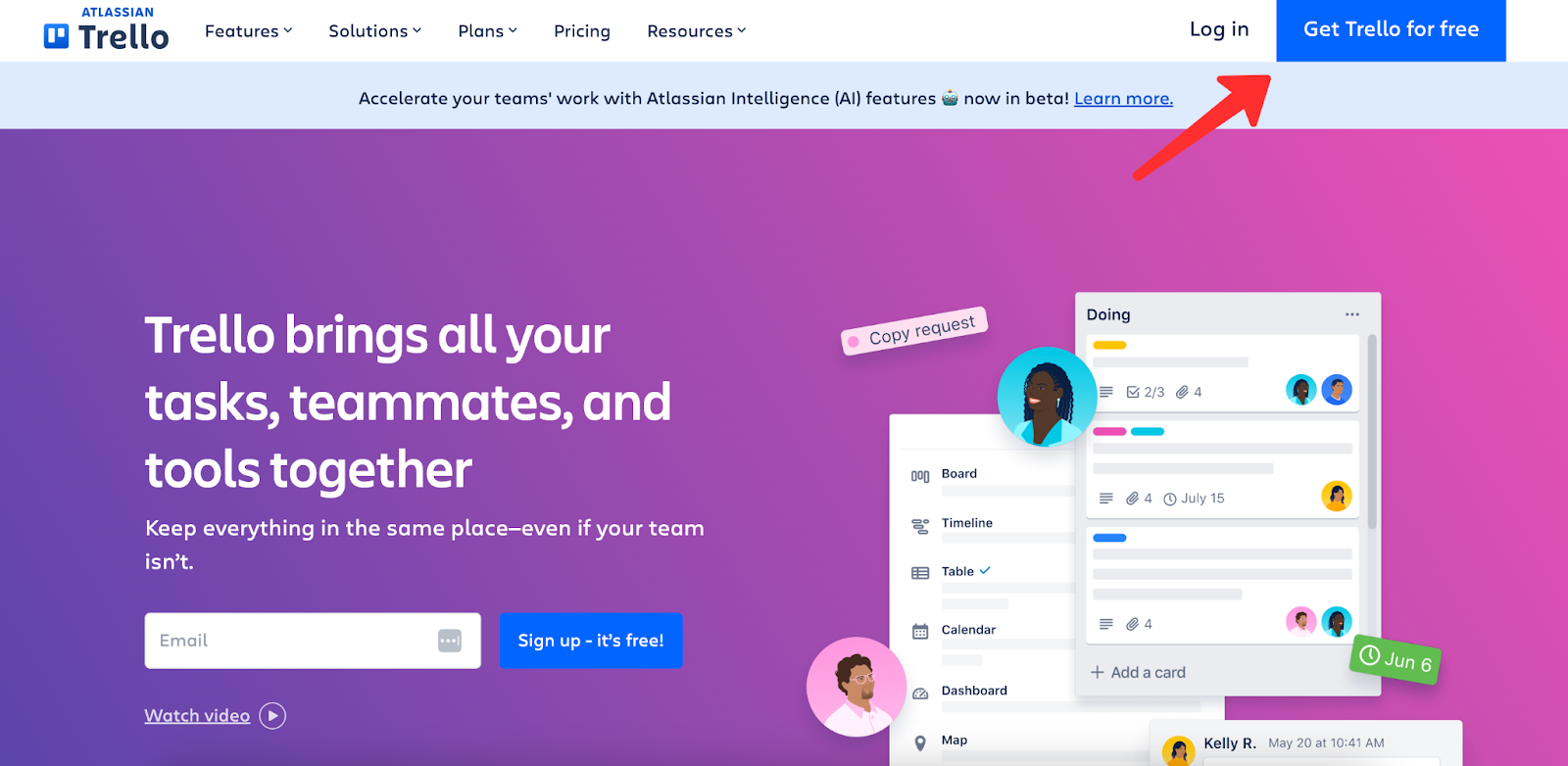 Source: Trello
Source: Trello
By signing up for the free version, users still get a ton of great features, which Trello highlights here.
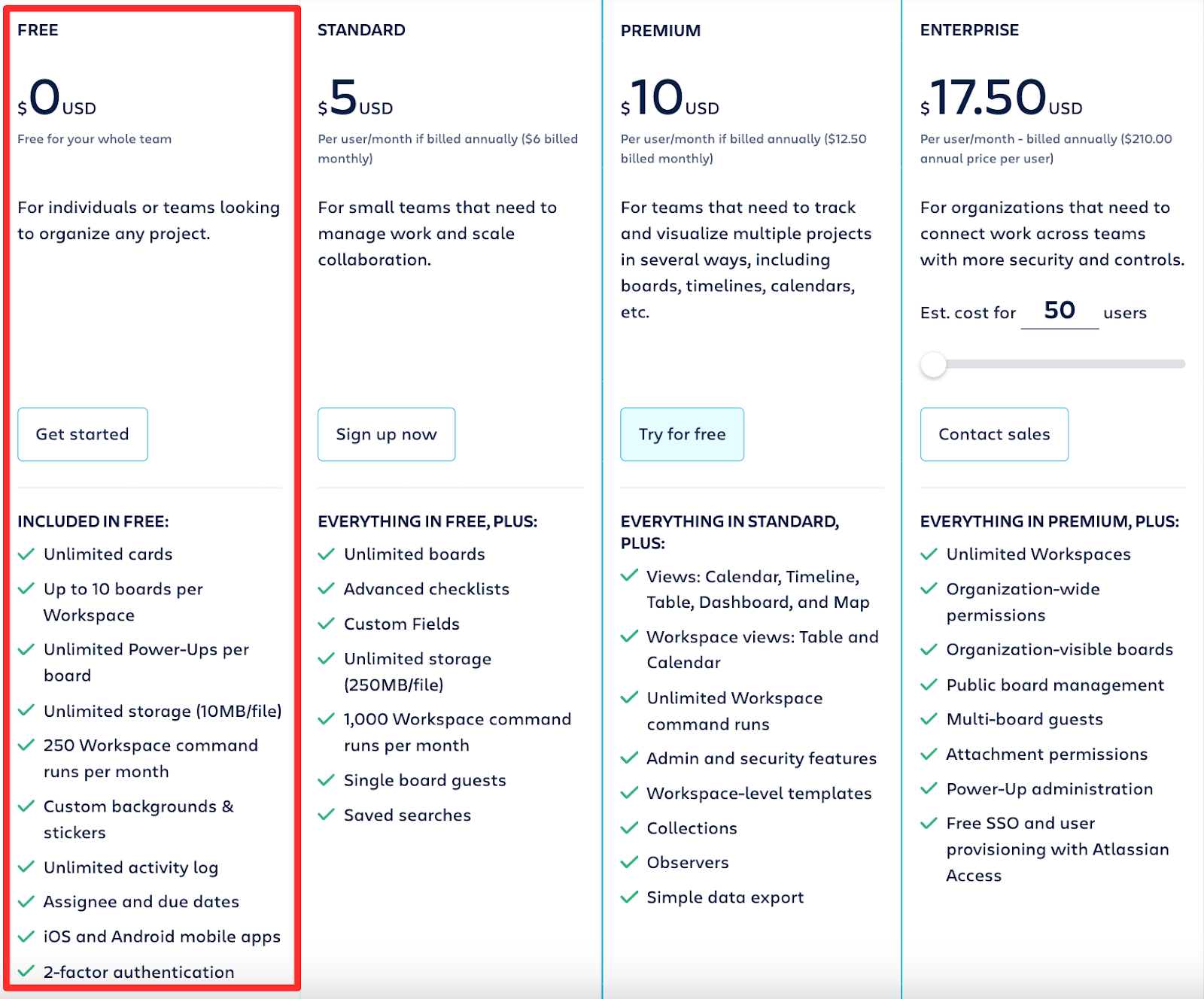 Source: Trello
Source: Trello
For instance, there are unlimited cards, up to 10 boards, unlimited storage, an unlimited activity log, and more — everything teams need to get up and running and integrate Trello into their workflows.
Of course, there are other paid plans available, including Standard, Premium, and Enterprise that offer even more comprehensive features and perks.
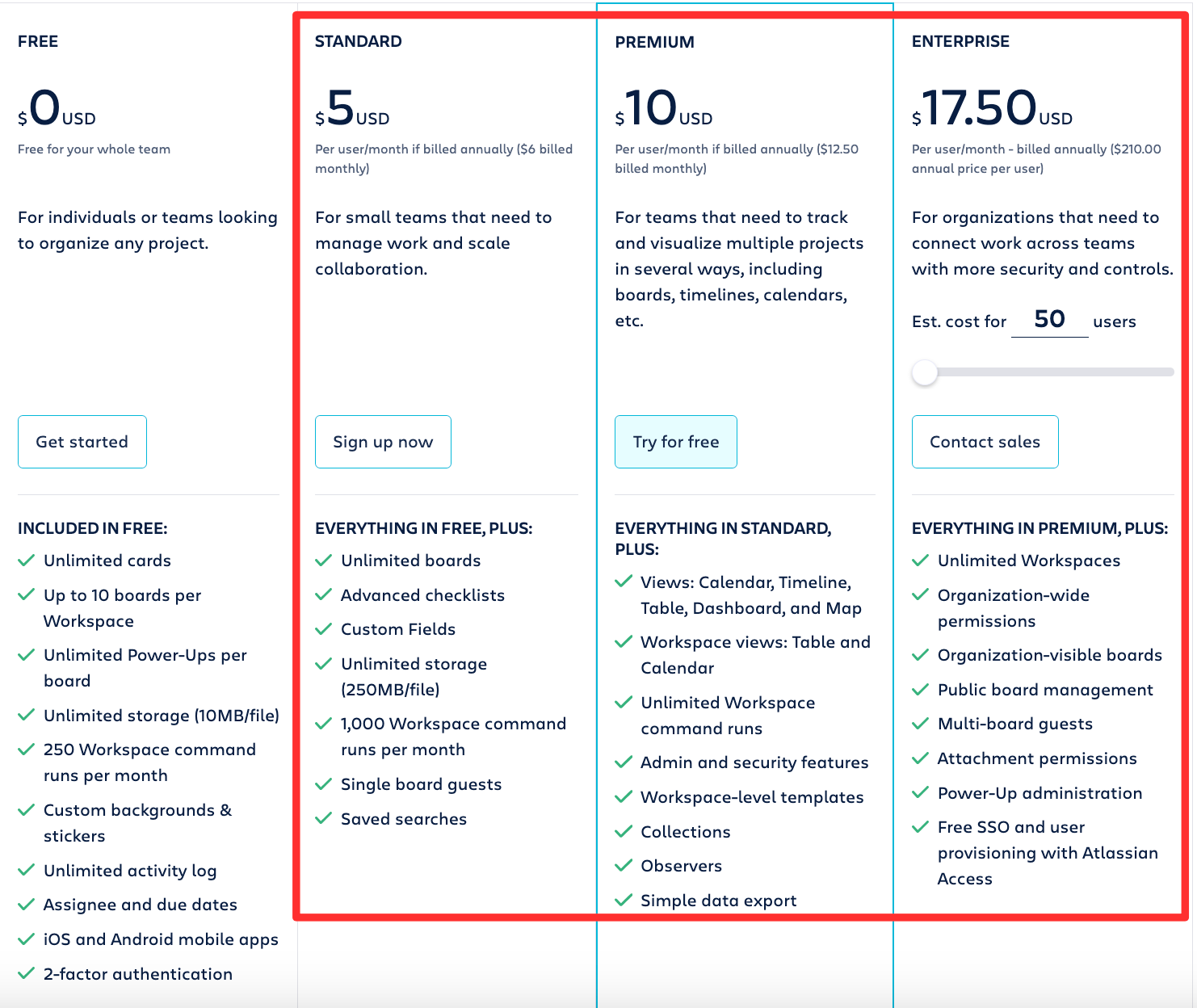 Source: Trello
Source: Trello
Like any other product led revenue growth company, Trello’s long-term game plan is to pique the interest of leads, encourage them to use their free product version, and convert the maximum number of users into paid users.
And they do that by creating a seamless product experience and letting users see Trello’s full range of capabilities for free.
3. Calendly
Our final product led strategy example is Calendly — one of today’s top scheduling automation platforms.
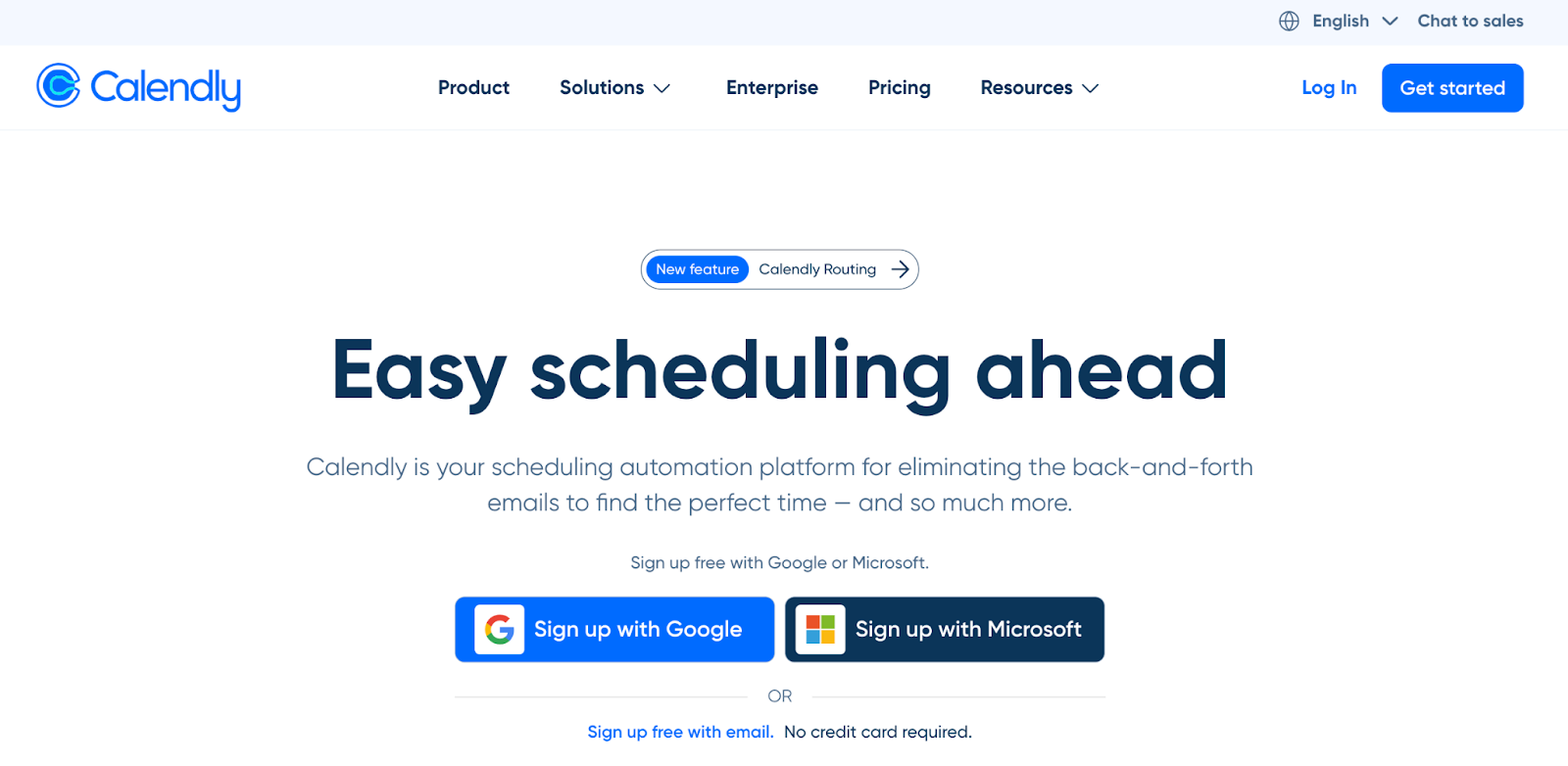 Source: Calendly
Source: Calendly
A quick look at Calendly’s website and you can see that product led growth is baked directly into their sales cycle.
For starters, their website does an amazing job of walking prospects through their product and helping them understand the core features.
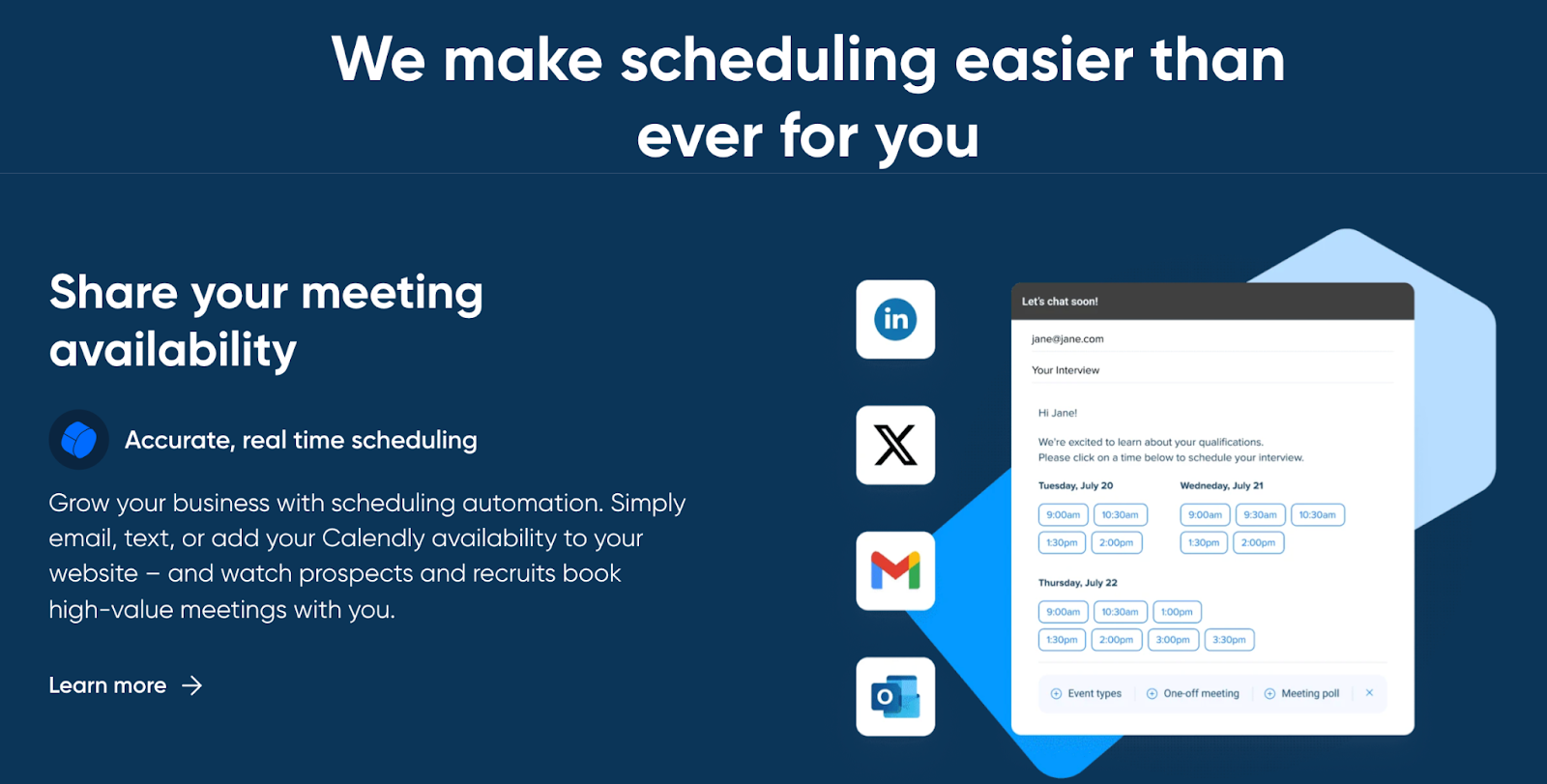 Source: Calendly
Source: Calendly
They offer concrete data on how Calendly has helped other businesses achieve their goals and maximize their ROI, citing real-life stats.
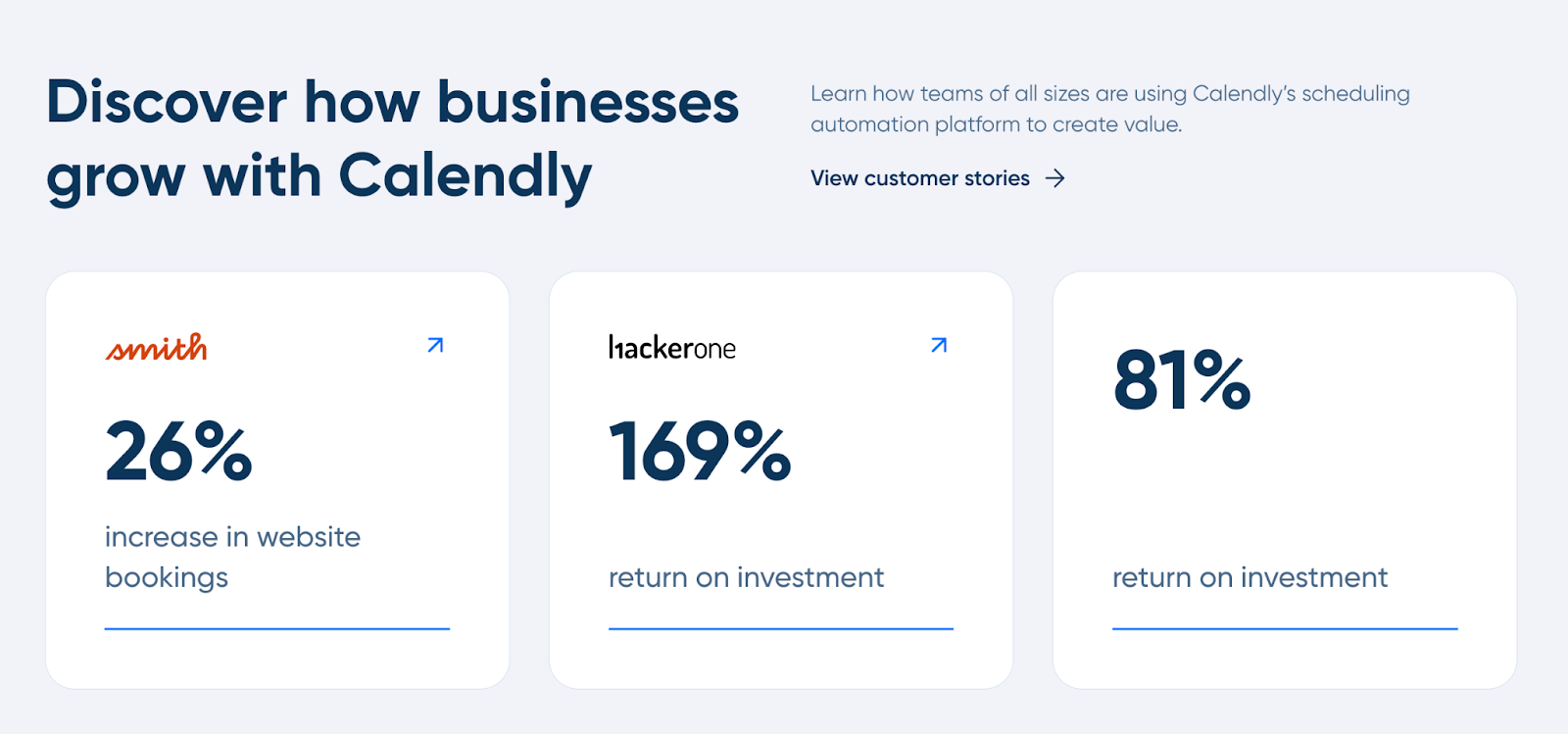 Source: Calendly
Source: Calendly
And they let users take the product for a “test drive” with a free version that offers plenty of good features, including unlimited meetings, calendar integrations, and automatic event notifications.
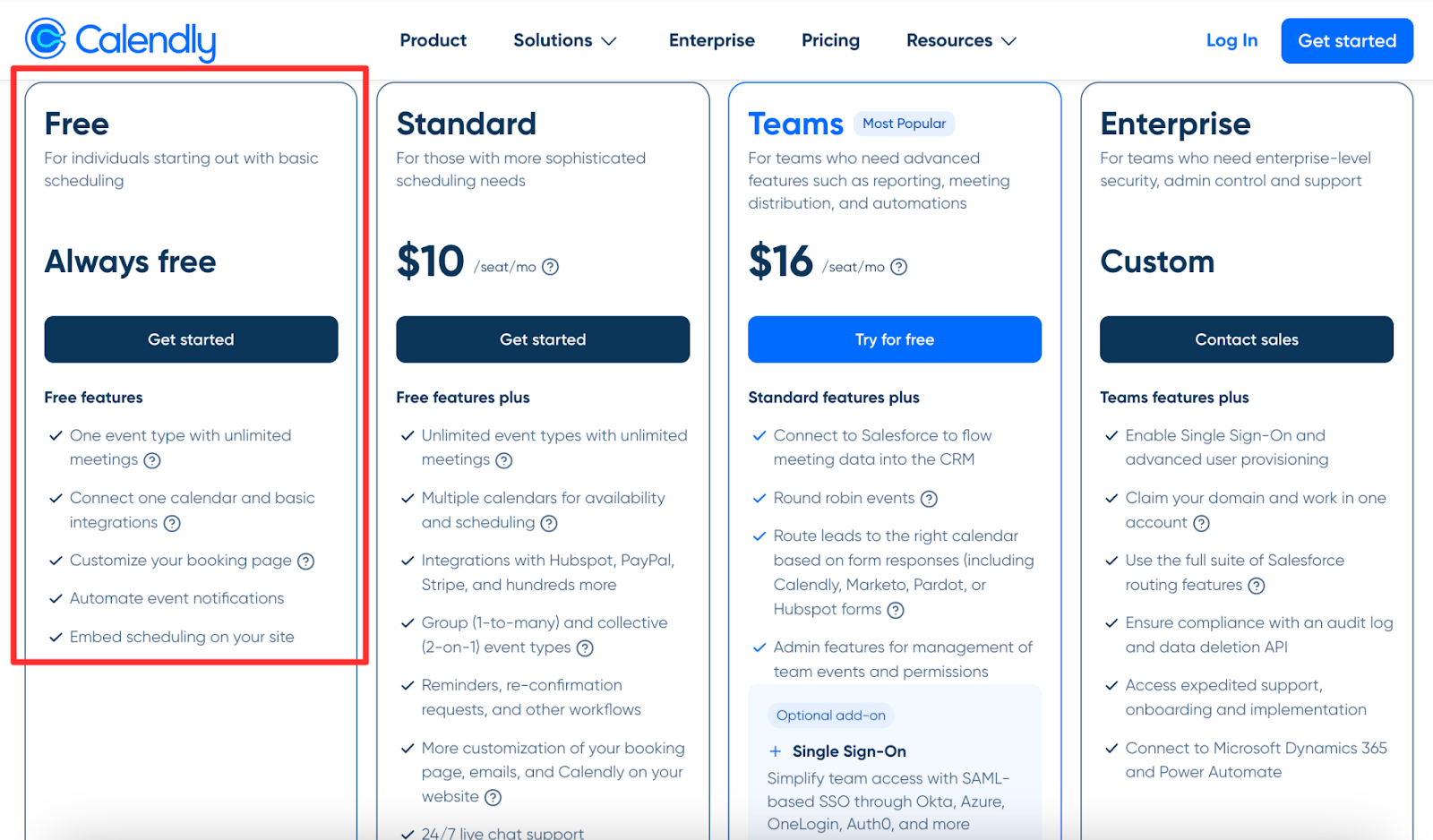 _Source: Calendly _
_Source: Calendly _
Once free users get a taste of what Calendly offers, a good chunk will feel compelled to upgrade to a paid version with additional features.
And looking long-term, Calendly can also increase customer loyalty among its existing customers to boost retention — all without asking hardly anything of their sales team.
Examples of Sales Led Companies
1. Chili Piper
When it comes to a more traditional sales approach where the sales team is heavily involved with growth, Chili Piper is definitely a company that comes to mind.
Right away, they make it clear that they want prospects to sign up for a demo and have two CTAs above the fold on their homepage.
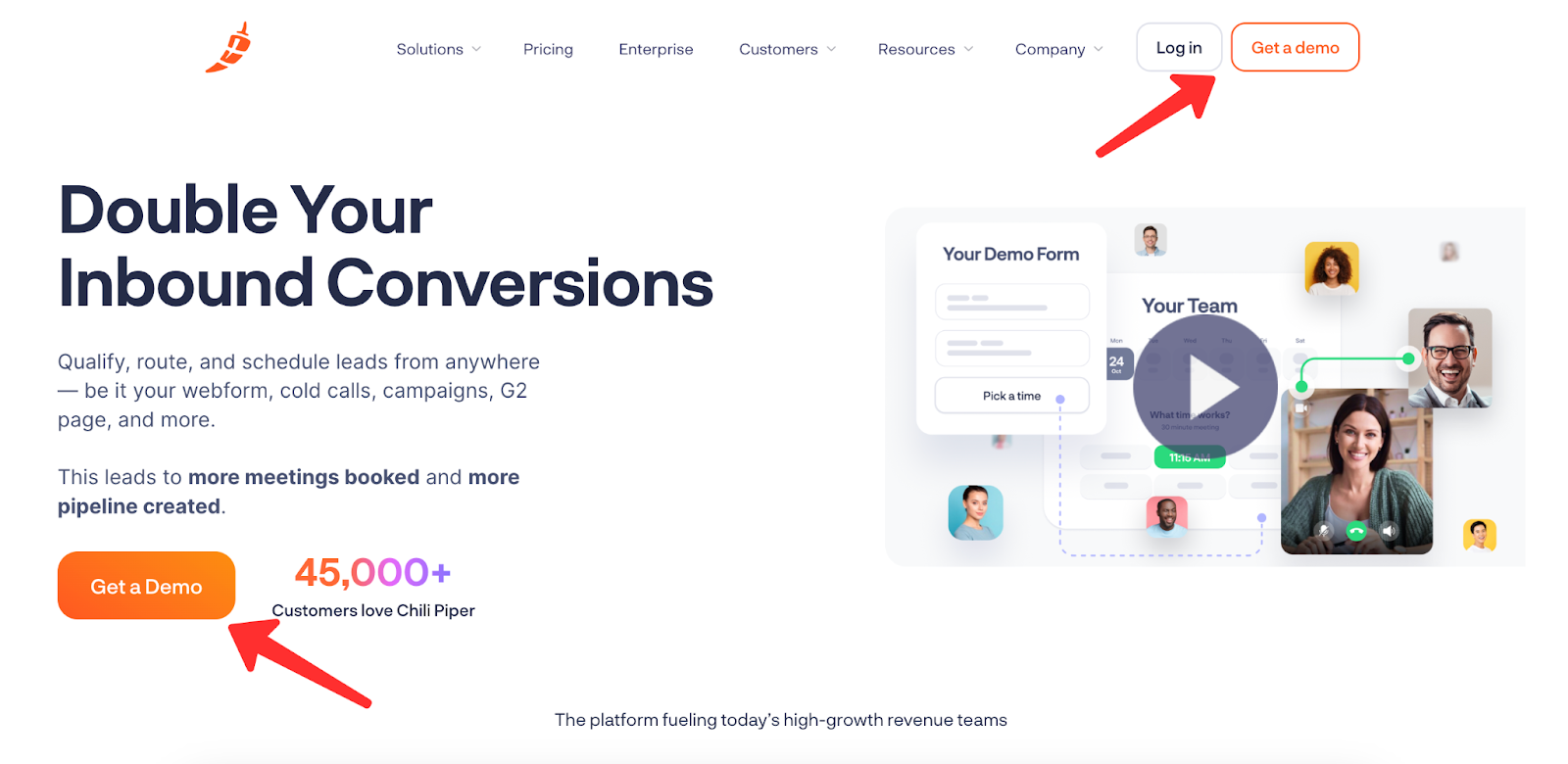 Source: Chili Piper
Source: Chili Piper
They also have the same CTA peppered strategically in other locations throughout their website so leads can’t miss it.
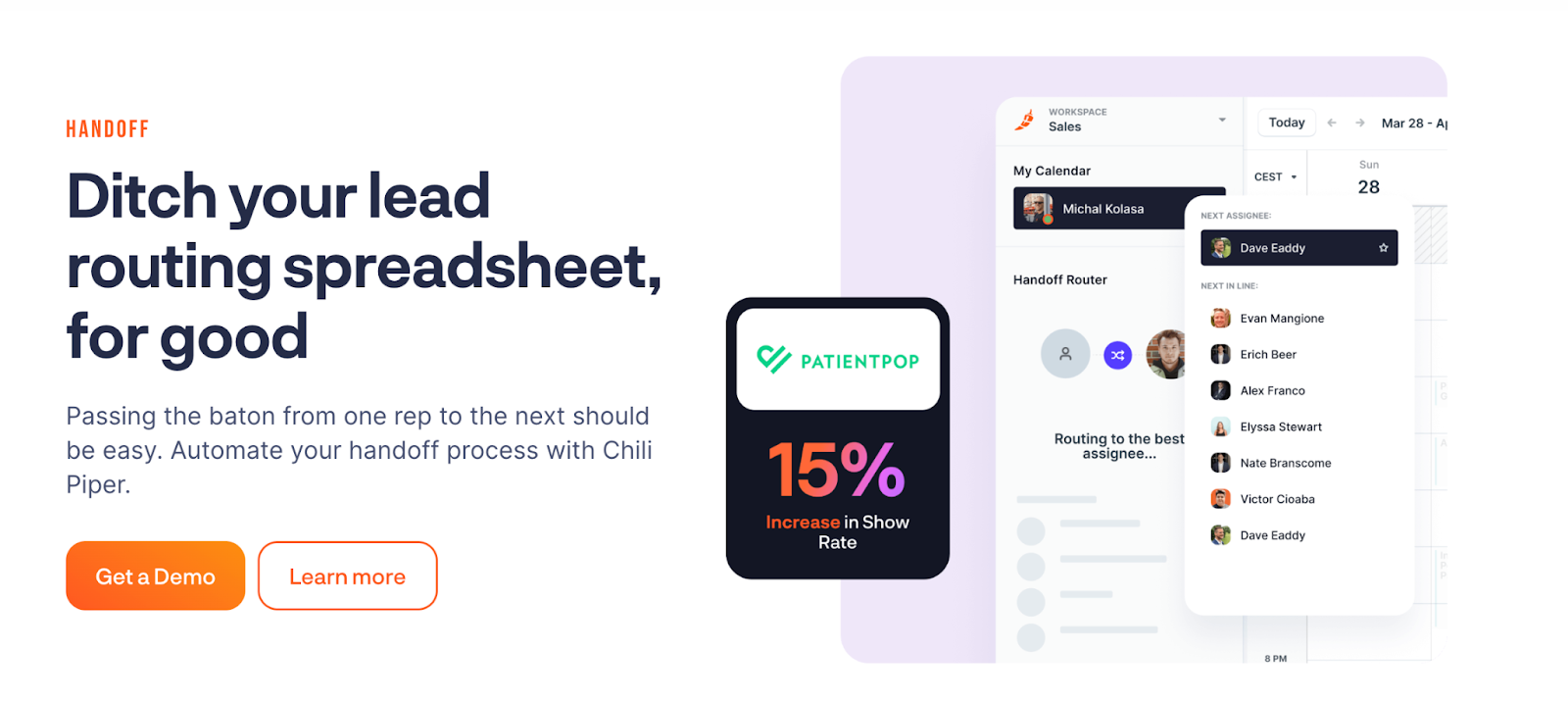 Source: Chili Piper
Source: Chili Piper
Once someone clicks on a CTA, they’re taken to this page where they can book a demo with a sales rep and see some impressive stats on how Chili Piper can help brands quickly qualify, route, and book prospects.
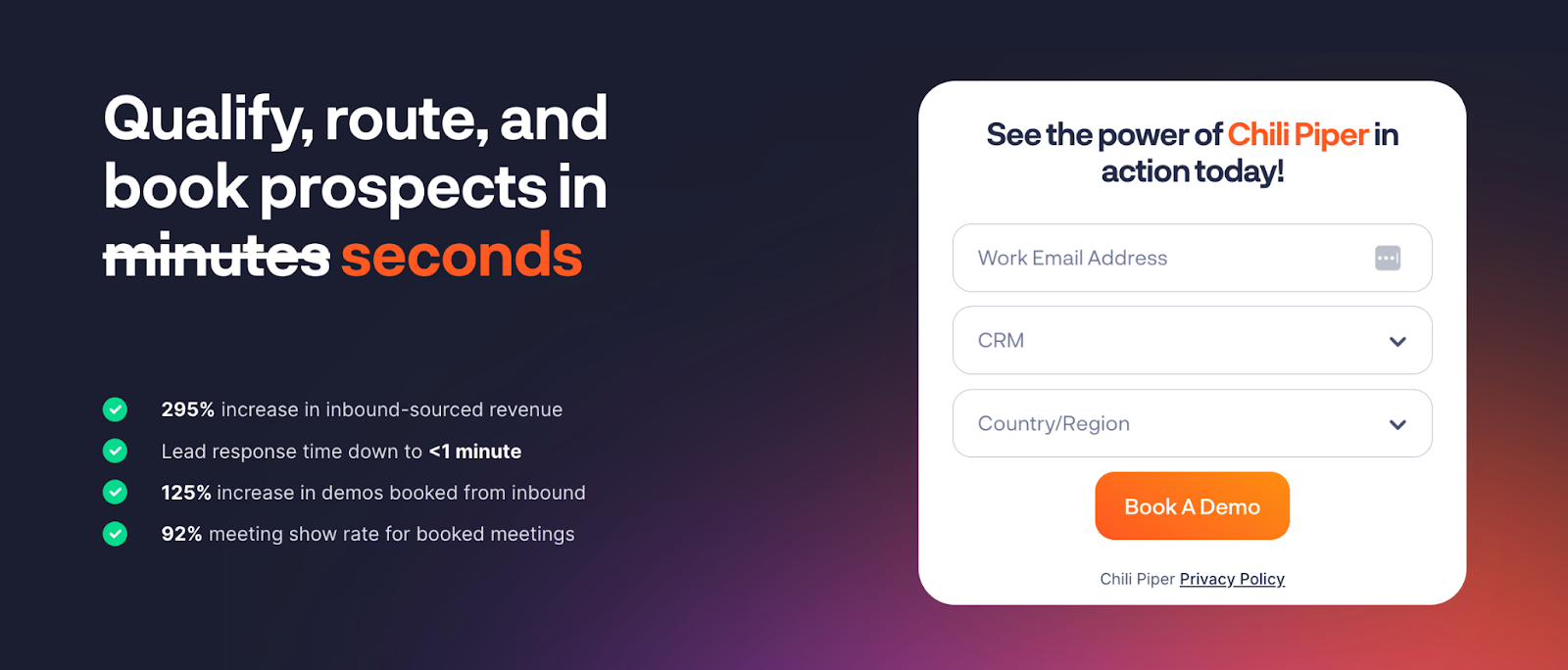 Source: Chili Piper
Source: Chili Piper
Like the product led growth companies mentioned above, Chili Piper does a good job of explaining the basic features and benefits of using the platform.
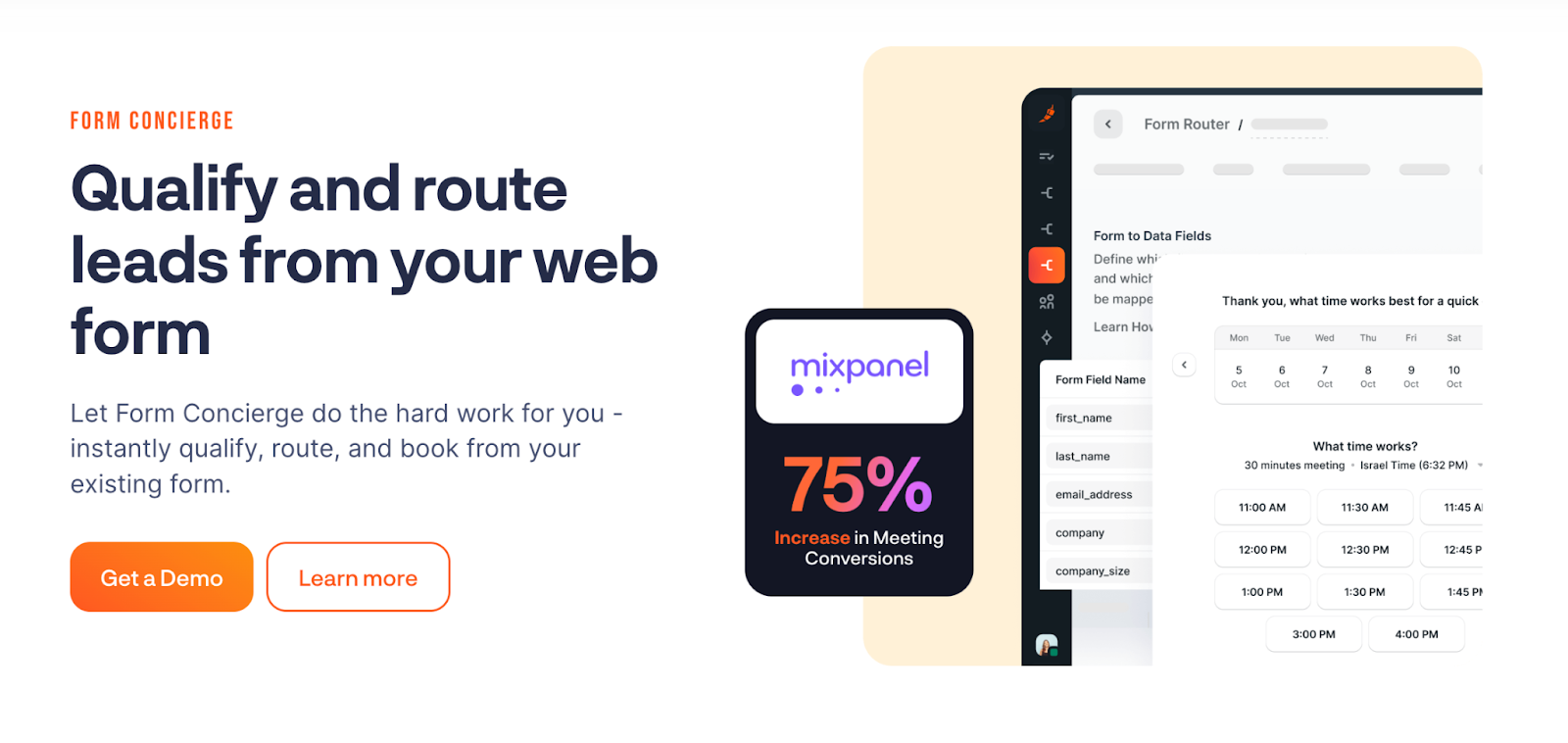 Source: Chili Piper
Source: Chili Piper
However, they don’t offer a free version…
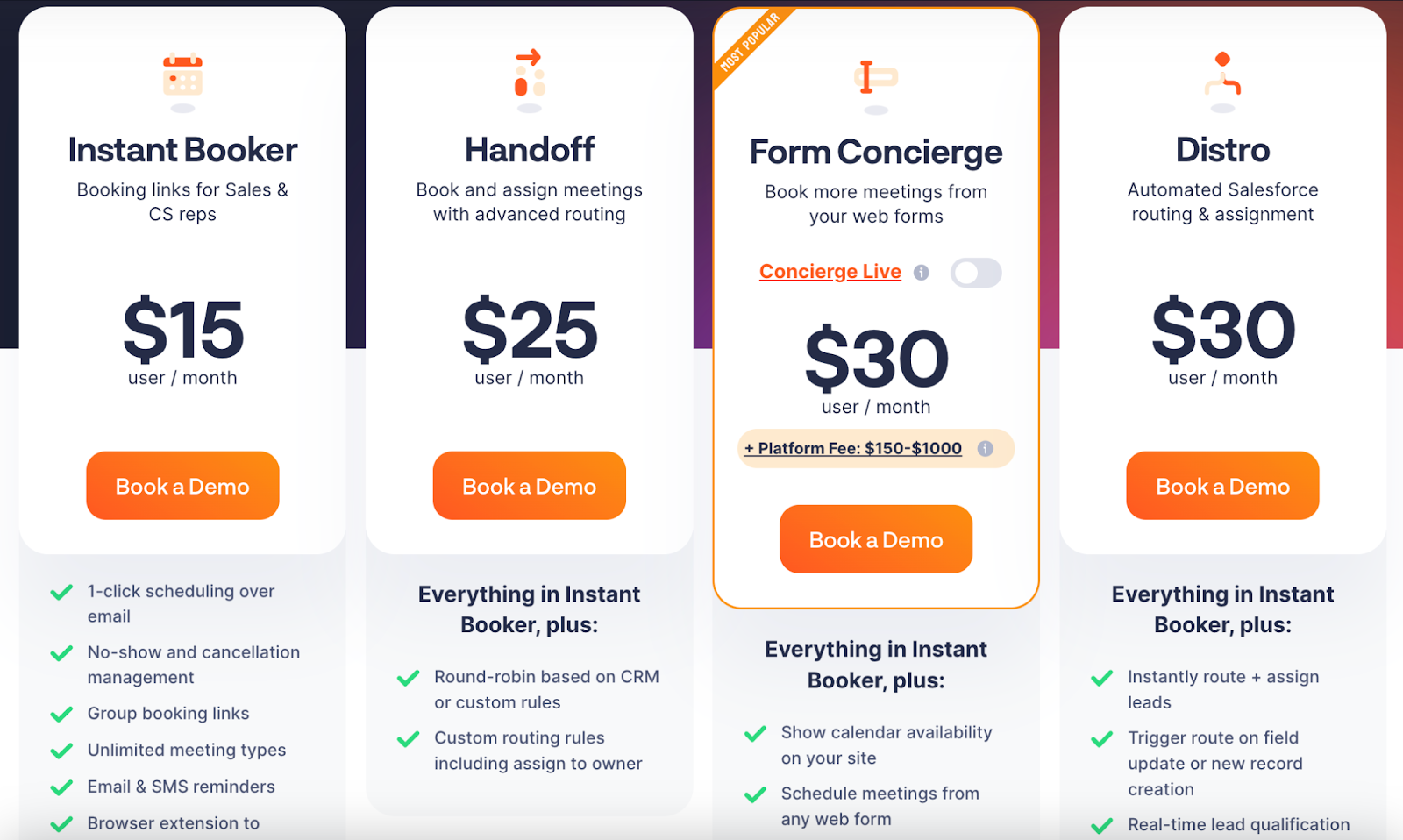 Source: Chili Piper
Source: Chili Piper
…and their bread and butter for converting leads involves sending them to their sales team so they can get a personalized demo.
2. HireDNA
HireDNA is a sales recruiting platform that helps companies build top-tier sales teams by taking a science-based approach to recruiting.
It’s an innovative platform with a high success rate.
 Source: HireDNA
Source: HireDNA
And while their website explains the ins and outs of the product, HireDNA relies heavily upon their sales team to sell the product and maximize customer acquisition.
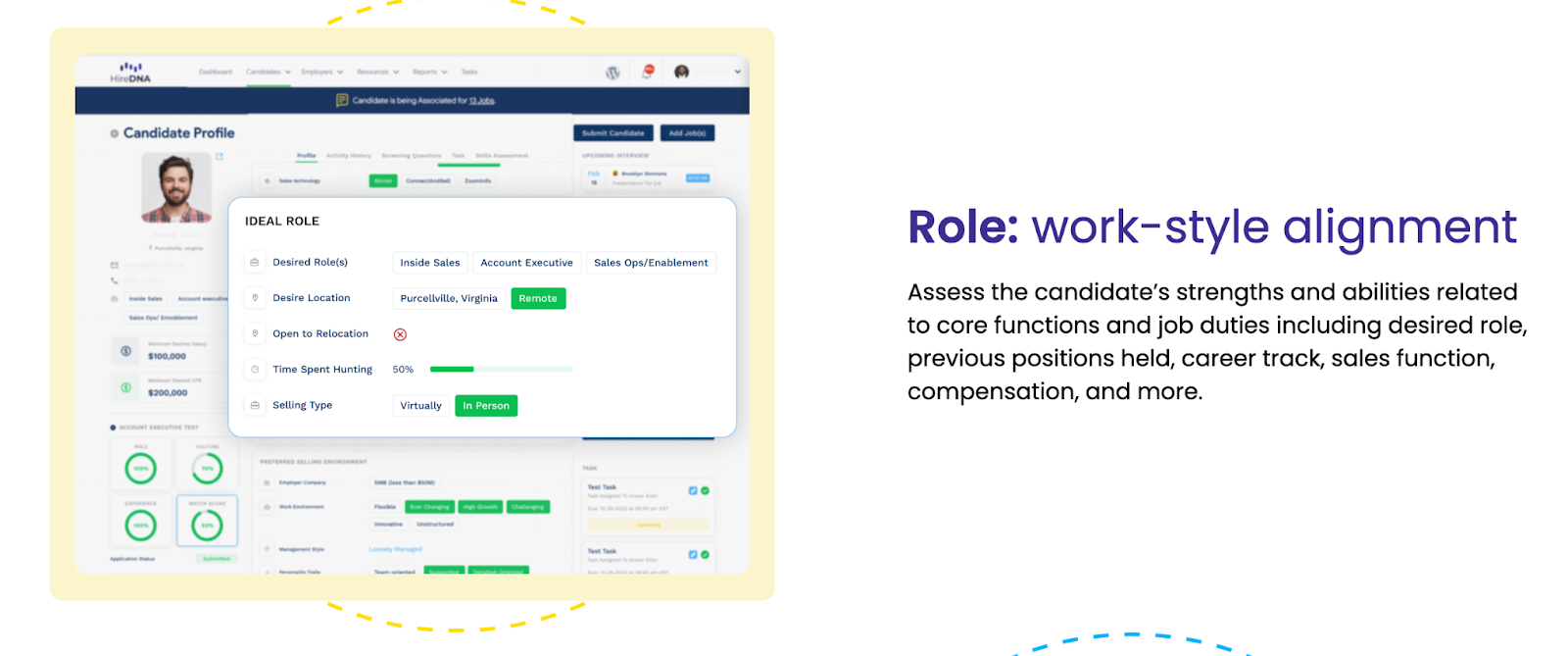 Source: HireDNA
Source: HireDNA
For example, one of the main pages HireDNA funnels prospects to is this one where they ask for contact details so they can set up a 30-minute call to discuss the product, answer questions, and ensure HireDNA fits a lead’s requirements.
 Source: HireDNA
Source: HireDNA
This consultative, one-on-one approach is the essence of traditional sales led business growth.
While customer acquisition is more labor-intensive using this model than many product led strategies, it clearly works for HireDNA.
3. Oracle
Lastly, there’s Oracle — a tech company nearly everyone is familiar with.
 Source: Oracle
Source: Oracle
As we mentioned earlier, sales led models tend to work best for companies that have complex solutions and that cater to larger organizations.
Oracle is a classic example, as they offer a staggering number of software solutions, which you can see here.
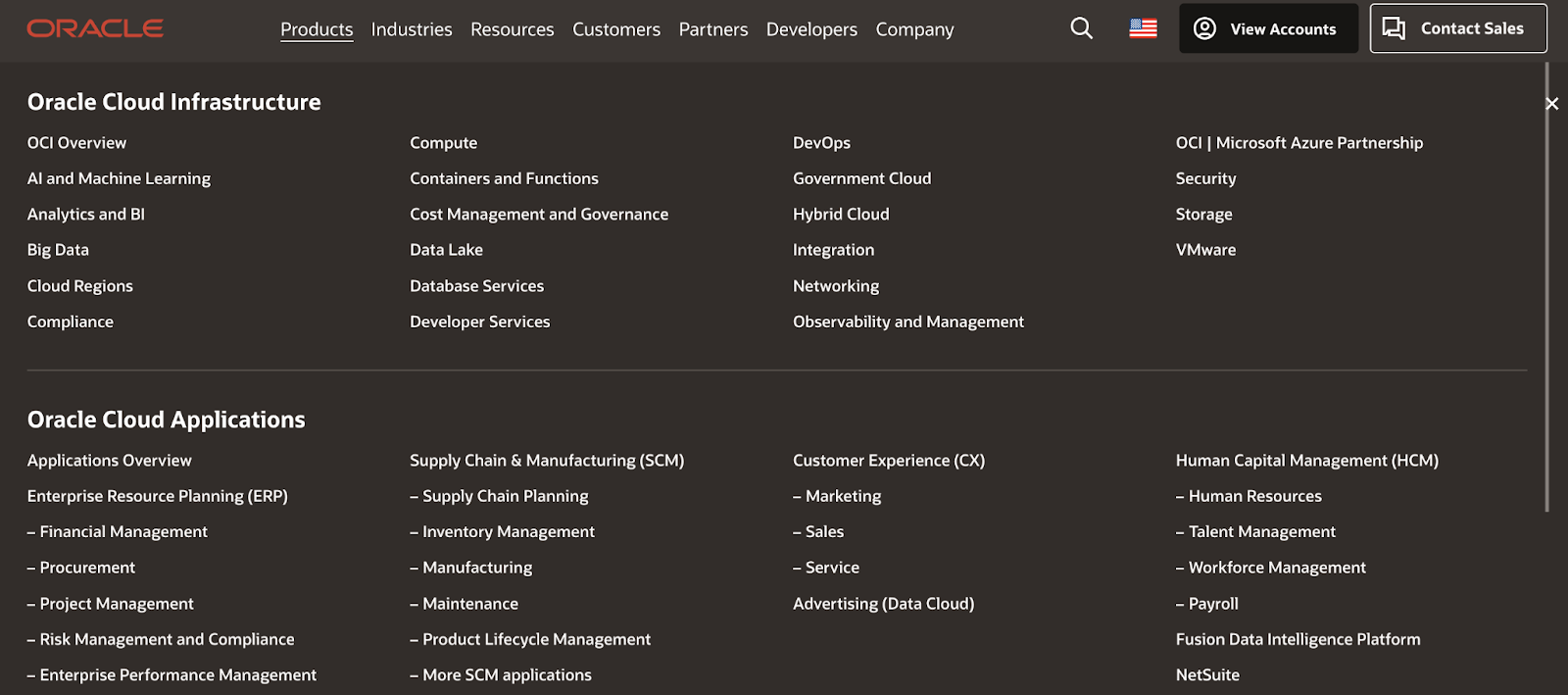 Source: Oracle
Source: Oracle
As a result, a product led approach doesn’t really make sense for Oracle, which is why they make it abundantly clear that they want prospects to contact sales directly.
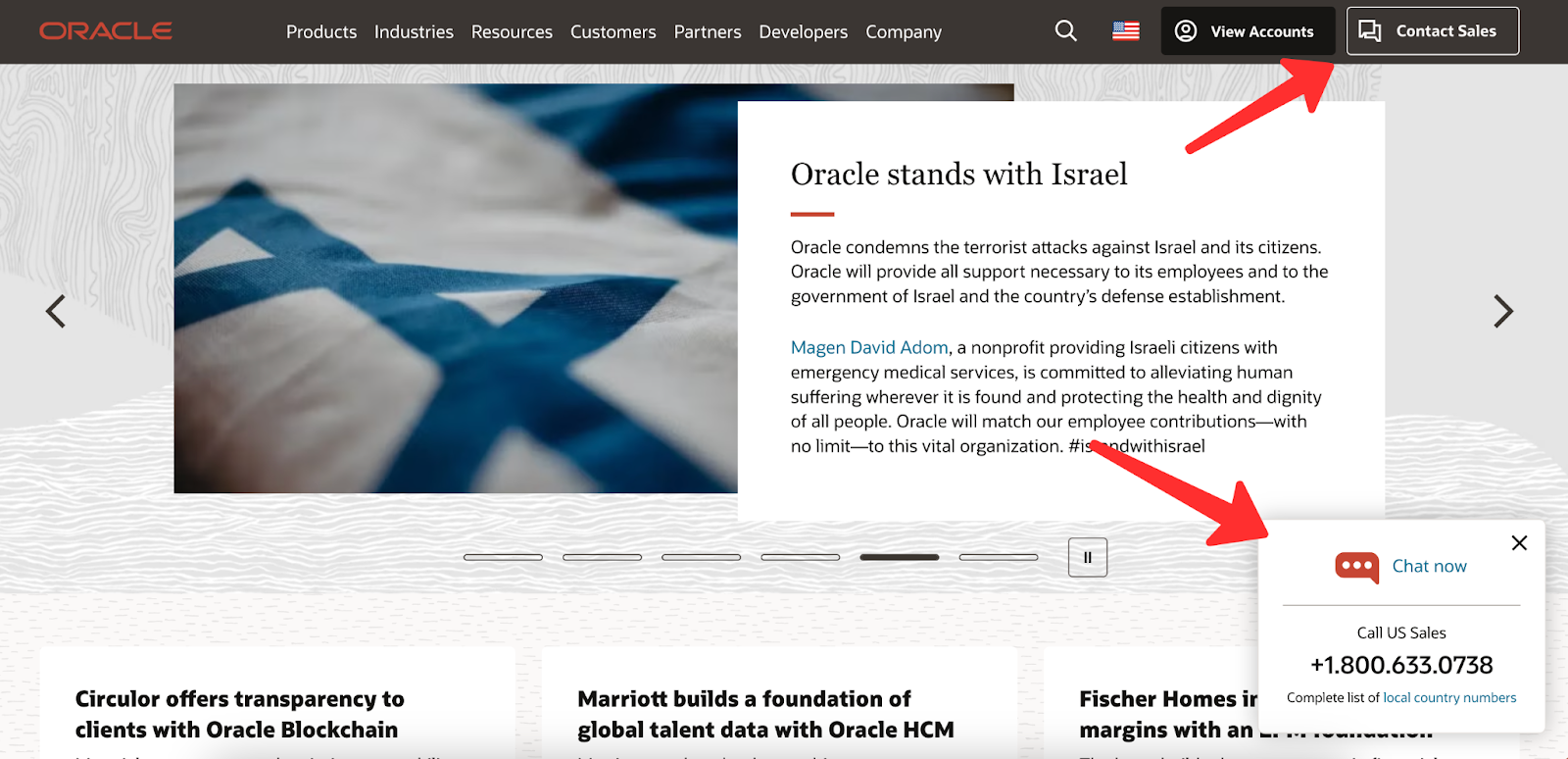 Source: Oracle
Source: Oracle
Their game plan is to pique the interest of prospects and get them to take the next step by contacting sales.
 Source: Oracle
Source: Oracle
From there, Oracle can direct them to the appropriate sales team member who can start the nurturing and relationship-building process.
They can answer questions and learn all about a prospect’s unique needs so they can point them to the right product. And that’s at the heart of a sales led approach.
A Third Way: A Hybrid Approach
Like most areas of life and business, things aren’t always black and white.
Rather than being all in on PLG or SLG, we’re seeing a trend where more companies are choosing to combine the two in a hybrid approach.
This is something McKinsey & Company talked about in a recent article.
“The lines between PLG and SLG are already starting to blur; pure-play PLG companies are hiring sales teams to cater to larger enterprises, while more traditional, SLG-driven companies are investing in product-led experiences to help their sales teams prove the value of the product and appeal to a new class of SMB customers.”
This means you don’t have to side completely with one sales growth approach. In fact, the best option could very well be leveraging a mix of both strategies to convert more customers.
What’s most important is that your sales and marketing are set up in a way that efficiently turns prospects into leads and leads into customers while educating them on your product and properly conveying value.
As long as you do that effectively, revenue growth should follow.
Which Approach is Right For You?
If you have a relatively simple product that a potential customer can learn about and understand its core value in a self-service manner, product led growth is usually your best bet.
For example, if you have a free product version that you feel is sufficient for letting users understand your UVP and they can explore features on their own, this is likely the best way to go.
As long as it’s not overly complex and you’re not catering to an enterprise company or doing account-based marketing, most SaaS companies can benefit from PLG.
On the other hand, if your sales cycle is actively reliant upon a marketing and sales team to convey value and you’re looking for the personal touch, SLG is likely your best bet.
For instance, if your product is complex, geared toward larger companies, or needs a demo to fully get the value across, a sales led approach is often necessary.
Just keep in mind that going a hybrid route can work as well, but you’ll still need to decide which side you’ll primarily lean toward.
Use Analytics to Improve Your Product and Sales
One last thing to mention is that using product analytics can be a tremendous help for understanding user behavior, identifying overarching trends, optimizing product development, and improving the overall customer experience.
Woopra, for example, offers comprehensive end-to-end customer journey analytics that allows a product manager to track the entire sequence.
They can see when someone:
- First signs up for a free product version
- Opens an email
- Completes their profile
- Uses a core feature
- Becomes a paid customer
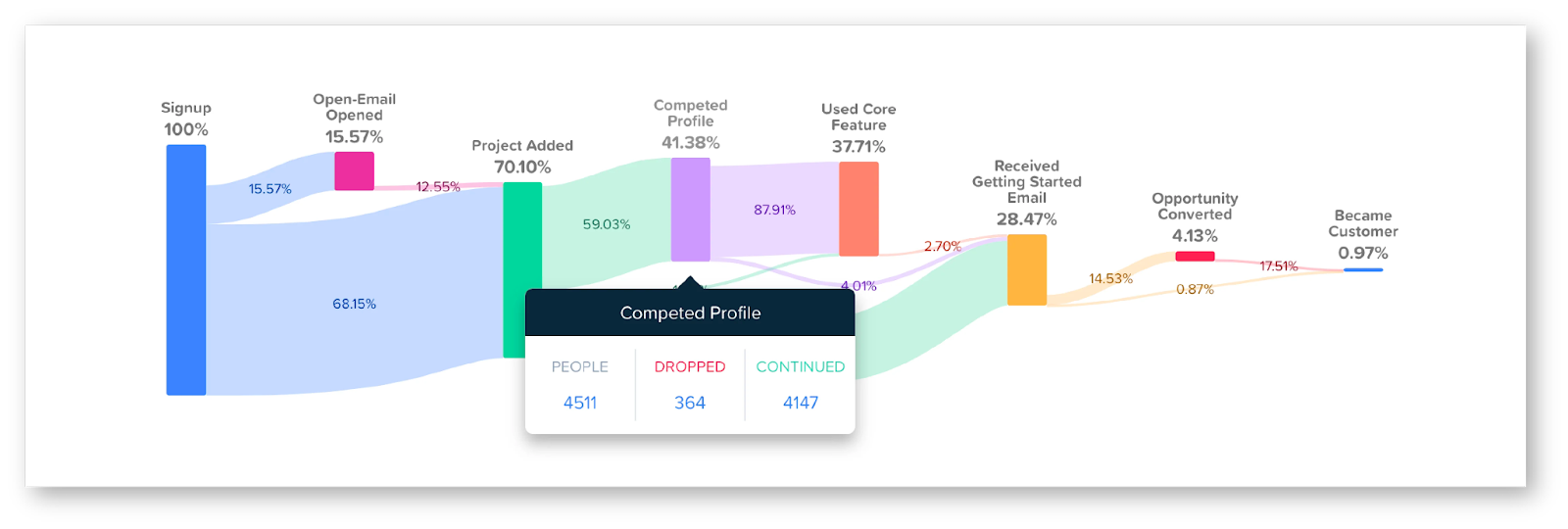
So if you were taking a PLG approach, you could use this data to determine how successful you are and if there are any areas with above-average dropoff.
From there, you could make changes to resolve any issues to:
- Boost product engagement
- Increase your conversion rate
- Lower your customer acquisition cost
- Raise customer satisfaction
And the more data you accumulate over time, the better equipped your product team will be to reach your target demographic through effective product marketing and sales outreach, setting the stage for greater customer success.
If you’re serious about product management and don’t want to leave anything to chance, analytics is a must.



